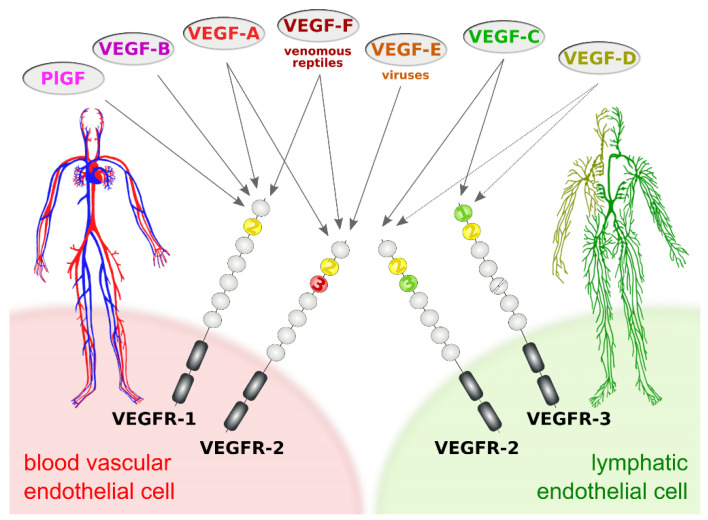Figure 1.
Vascular endothelial growth factors (VEGFs) act on blood vessels and/or lymphatic vessels depending on their affinities towards VEGF receptors 1, -2, and -3. VEGFR-2 is expressed on both blood and lymphatic endothelium. In principle, growth factors that do activate VEGFR-2 can promote both the growth of blood vessels (angiogenesis) and lymphatic vessels (lymphangiogenesis). VEGF-E and VEGF-F are not of human origin: VEGF-E genes are found in viral genomes, and VEGF-F is a snake venom component. All receptor-growth factor interactions require the extracellular domain 2 of the VEGF receptors (shown in yellow) [6,7,8,9]. Domain 3 of VEGFR-2 is important for the interaction of VEGFR-2 with both VEGF-A [7] and VEGF-C [8], and domain 1 of VEGFR-3 is important for the interaction of VEGF-C with VEGFR-3 [9].

